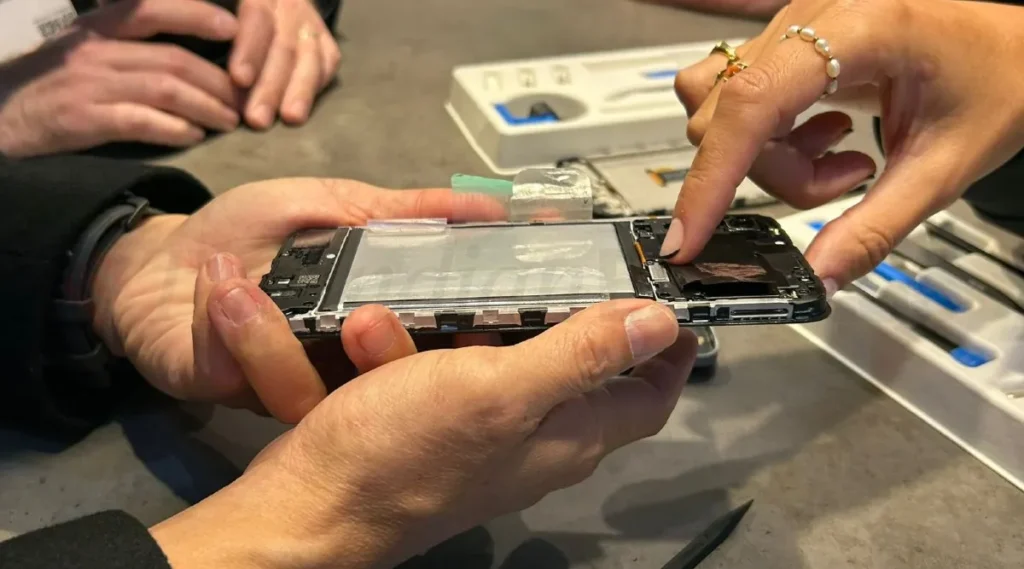When comic strip detective Dick Tracy wore the “two-way wrist radio” for the first time in 1946, it was considered science fiction. These days, making cordless calls isn’t among the most amazing functions of smartwatches. As an independent platform capable of hosting their own apps, smartwatches differ from earphones, another well-known high-tech wearable.
Smartwatches have found their niche primarily in health and safety tasks rather than trying to replace smartphones. This trend can be partly attributed to the fact that the leading smartwatch OS vendors also control the leading smartphone operating systems. Moreover, technical limitations such as display size, input surface, and battery capacity prevent smartwatches from fully competing with smartphones. This dynamic sets the stage for understanding the challenges faced by new wearables aiming to replace smartphones.
The Humane AI Pin, a wearable intended to replace the smartphone, exemplifies these challenges. Despite the potential in its hands-free access to generative AI and capabilities for photo and video capture, the device was poorly received. As of May 21, it was rumored that the company was putting itself up for sale. The AI Pin faced significant criticism, many of which could be mitigated if it were a smartphone accessory rather than an independent device. For instance, the need for a separate subscription and phone number would vanish if it piggybacked on the phone’s connectivity like most smartwatches. Eliminating the cellular radio would also reduce the device’s size and improve its battery life. Moreover, integrating with accounts and other apps would become more seamless.
Historically, there have been other attempts at creating screen-free, cellular-connected wearables. Pebble Core, developed by the pioneering smartwatch startup Pebble, was a keychain-friendly device that accessed Alexa via a 3G network, streamed Spotify, and provided emergency location info via GPS. Intended as a running companion, it was part of a 2017 crowdfunding campaign that raised nearly $13 million. Unfortunately, the product never made it to market as Pebble ran out of time and resources. Since then, there have been no major efforts to create a similar product.
The AI Pin’s competition isn’t limited to smartphones. If it were an accessory, it would still compete with smartwatches and smart glasses like Amazon’s Echo Frames or Ray-Ban’s Meta smart glasses. Smartwatches remain the least conspicuous and monitor a broad range of health metrics, while smart glasses offer hands-free photo and video capture along with private listening through earbud-like speakers. Although some smartwatches feature integrated cameras, they are typically designed for surveillance rather than general use. Smart glasses could also potentially address the AI Pin’s issues with its projection display, especially in outdoor settings.
However, smart glasses face their own set of challenges. While they are becoming more like regular glasses, there is still a significant gap, especially for those who prefer thin frames. People who do not need prescription glasses are unlikely to seek out eyewear beyond occasional use sunglasses. In the U.S. alone, an estimated 45 million potential glasses wearers opt for contact lenses instead. Others choose LASIK or other surgeries to avoid wearing glasses. For those who do need prescription glasses, obtaining suitable lenses for smart glasses involves additional and often expensive steps. While a smart pin can bypass these issues, even a smaller pin would be more noticeable than Meta-infused Wayfarers. Although companies like Apple and Google are advancing augmented reality headsets, they have not shown interest in scaling this technology down to smart glasses. A specialist company like Xreal might take the lead in this area.
Despite the setbacks for the AI Pin, the future of on-the-go access to voice agents looks promising. Google already allows substituting the more advanced Gemini for Google Assistant, and Siri is expected to offer more generative AI-like conversations soon. These advancements will make it easier to interact with AI through a simple button press or tap on a smartwatch or earbuds, reducing the need for a smart pin. While the smart pin can perform some tasks better than a smartphone alone, it faces tough competition when smartphones are paired with other wearables.
While the concept of a smart pin like the Humane AI Pin holds potential, its execution as an independent device has proven problematic. Transforming it into a smartphone accessory could address many of its issues, but it would still need to compete with established wearables like smartwatches and smart glasses. As technology advances, particularly in voice agent capabilities, the need for such a device may diminish. The evolution of wearables continues to shape how we interact with technology, highlighting the importance of integration, usability, and the ability to adapt to user needs and preferences.
If you like the article please follow on THE UBJ.
